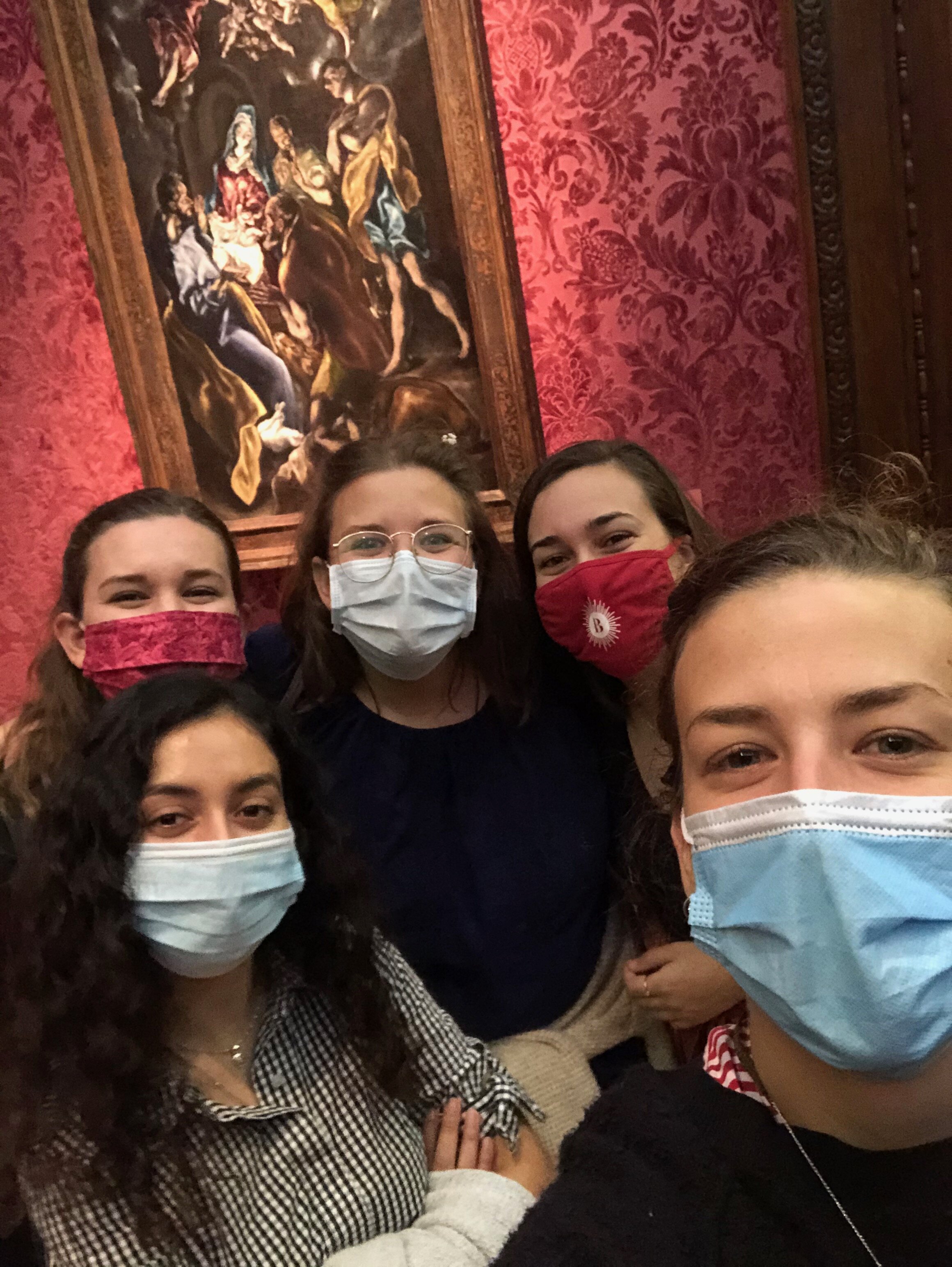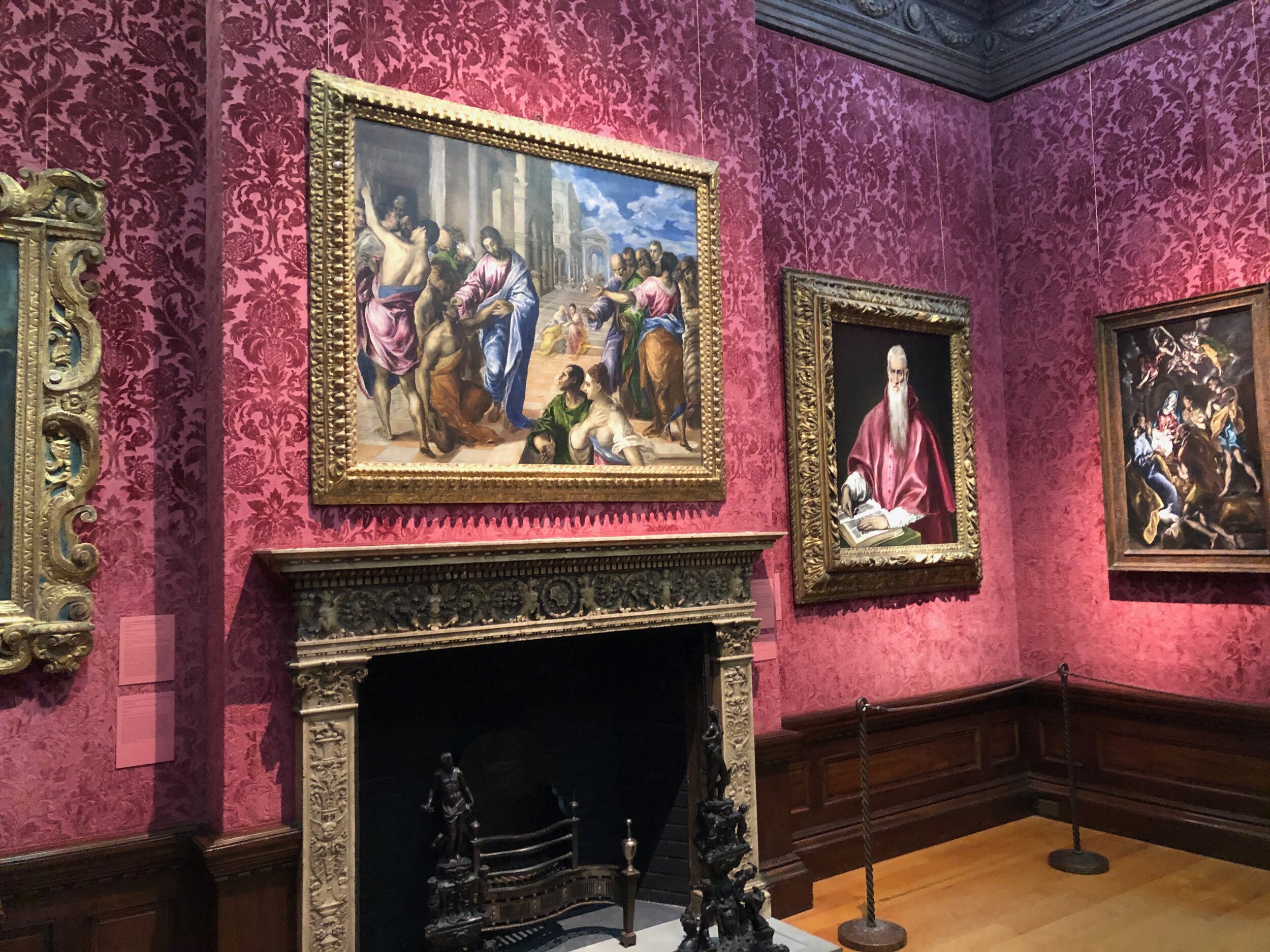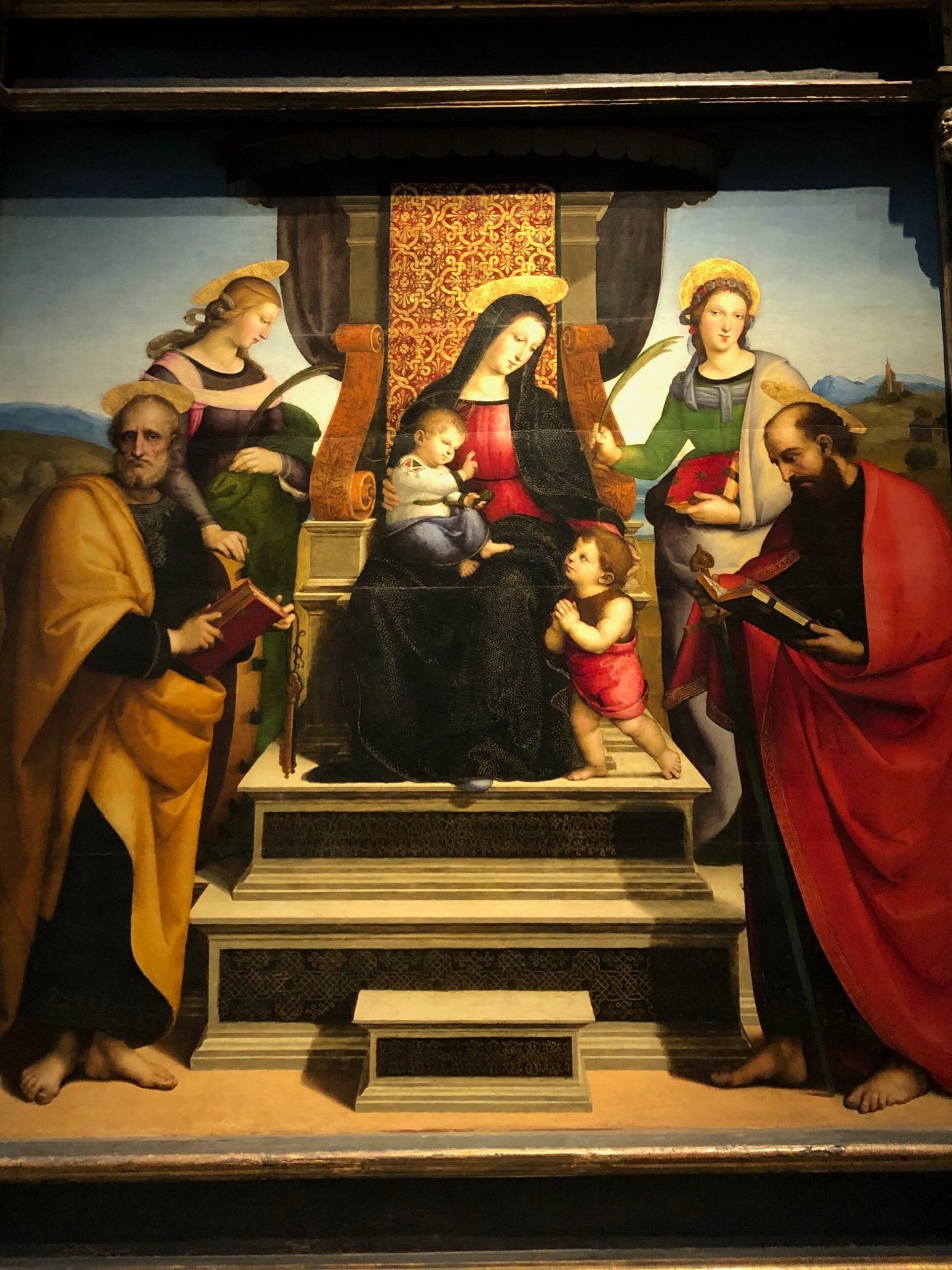Can the Holy Spirit work amidst structures of obedience?
Is it possible to use our unique gifts and experiences creatively in our work?
These questions and more were explored in my presentation with the Seton Teaching Fellows recently at the Met museum. The teaching fellows have come to New York this Fall to give a year of service to teaching in the Bronx with Brilla charter schools and offer catechetical after school programing. Between prayer time, teaching, lesson planning, and community living experiences, these young adults maintain a busy and highly structured schedule during the school year. So, we compared paintings by Raphael and El Greco as a context for discussing the paradoxical relationship between obedience and creativity through the Holy Spirit.
El Greco was initially trained as an iconographer in Greece, moved to Italy to study art from Renaissance artists (such as Raphael’s paintings), and finally moved to Spain where he gained acclaim for his artwork, which was more expressive than much of the artwork that was elevated at the time. Throughout his journey as an artist, El Greco remained true to religious narratives and traditions, yet possessed a natural freedom with the elongated and dramatized figures he portrayed, interplay of light, loose brushstrokes, and movement captured. Within his obedience to these narratives he found ways to simultaneously express them in ways others had not yet explored, breathing life into devotional imagery and scenes on Church walls. He wasn’t appreciated at first for this (and left Rome as a result) but was willing to move where he could freely work and bring his images to life.
How beautiful our own work can be when we allow the Holy Spirit to move within us! Through viewing El Greco’s work we learn that God doesn’t put us through a photocopier. The structures and relationships we are obedient to through work, family, and personal obligations transform stale things into living, breathing words and actions that bear fruit when we take the creativity of the Holy Spirit seriously. By becoming bound to truth lived out in our daily lives we ironically become more free, and inspire others to live in freedom too. “It is for freedom that Christ has set us free.” (Gal. 5:1).
Thank you to Emilia Chornay for inviting me to speak with with the teaching fellows! Check out this video to learn more about the Seton Teaching Fellows and the impactful work they are doing out of the Bronx.




